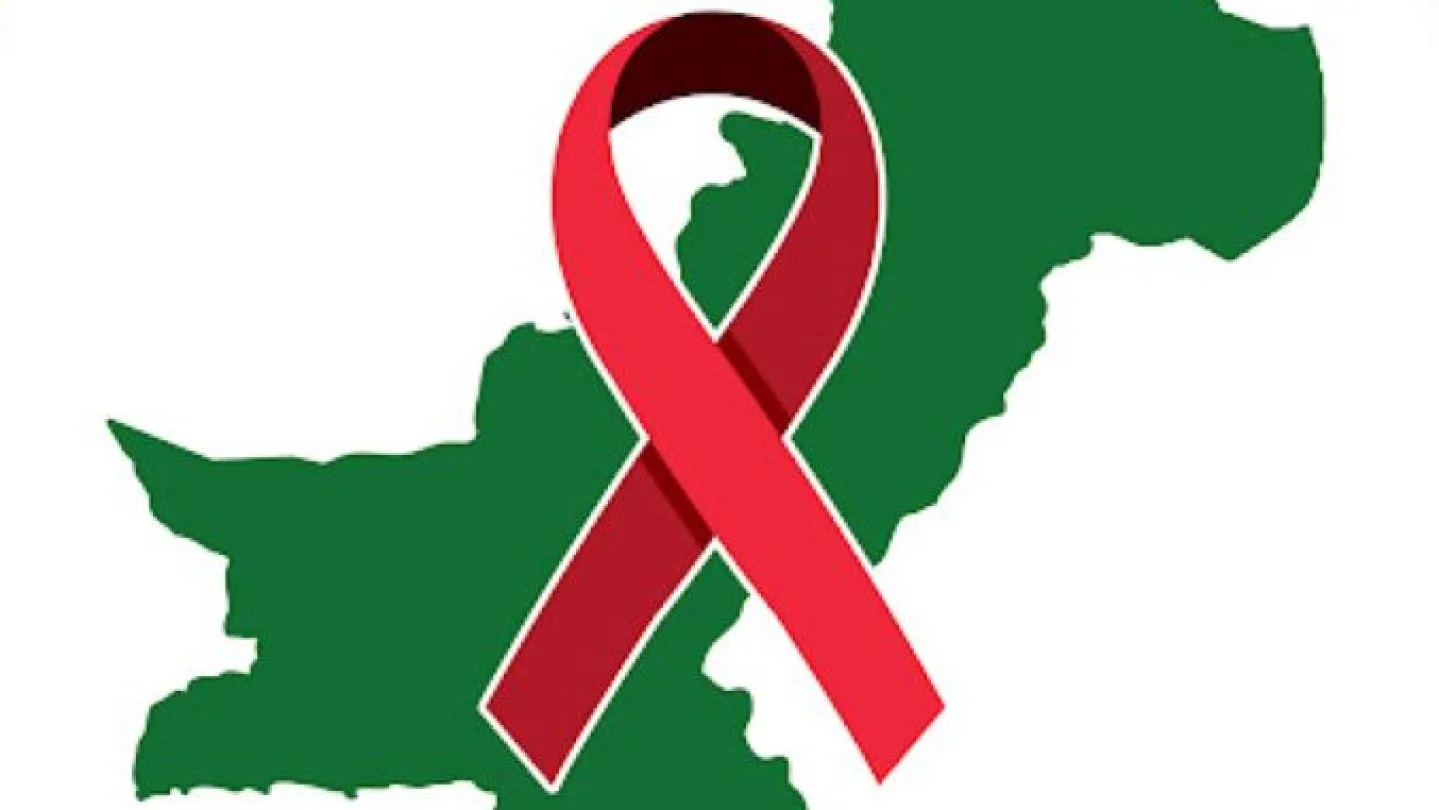As if caught in a spiral of tribulations, Pakistan witnessed with concern a spike in cases of the human immunodeficiency virus (HIV) in the country, with as many as 9,773 reported this year, indicating that the prevalence has reached a very alarming level. The Ministry of National Health Services officials claim that Punjab has recorded the majority of cases—6,106 during the past 10 months, from January to October of this year. The number of new cases of the said virus totaled 2097 in Sindh, 815 in Khyber Pakhtunkhwa, 496 in Islamabad, and 259 in Balochistan during the same period. Although Pakistan’s estimated HIV prevalence among the general population is less than 0.1%, the weighted prevalence of HIV among the major groups has been steadily rising, according to the results of the fifth Integrated Biological and Behavioral Surveillance Round which was conducted in 2016.
History: “An Exotic New Disease”
Two species of Lentivirus (a subtype of retroviruses) that infect humans are termed Human Immunodeficiency Viruses (HIV). They eventually lead to acquired immunodeficiency syndrome (AIDS), a disorder in which the immune system gradually fails, allowing cancers and fatal secondary infections to proliferate. Depending on the Human Immunodeficiency Viruses subtype, the average survival time without treatment following HIV infection is predicted to be 9 to 11 years.
The LGBT newspaper New York Native published the first news item on “an exotic new disease” on May 18, 1981. Thus, it was in the United States that the onset of AIDS was first clinically noted in 1981.
The earliest cases were comprised of a cluster of injectable drug users (IDUs) and homosexual males who had signs of Pneumocystis pneumonia, a rare opportunistic infection known to occur in patients with severely weakened immune systems, but for whom there was no recognized source of immunosuppression. Soon after, researchers at the NYU School of Medicine investigated homosexual men who were acquiring Kaposi’s sarcoma (KS), a previously uncommon skin disease. The U.S. Centers for Disease Control and Prevention (CDC) task force was established to monitor the outbreak when several further instances of PJP and KS were discovered, alarming the (CDC).
The virus may have been prevalent in the country, though, as early as the mid-to-late 1960s. As demonstrated by the case of Robert Rayford, a 16-year-old boy who developed symptoms in 1966 and passed away in 1969.
HIV: The Story of South Asia
In 2019, there were an estimated 38 million HIV-positive individuals living worldwide. Two to three million HIV cases out of these are speculated to exist in South Asia.
Notably, India has the largest population in South Asia—1.417 billion people—while the Maldives has the smallest with 0.56 million people.
In India, Human Immunodeficiency Viruses surveillance was launched in the years 1985–1986. At the time, there was widespread evidence of HIV infection among female commercial sex workers (CSWs) in southern Indian states. In the state of Manipur in 1989, IV drug users also reported having HIV. Presently, the risk of HIV transmission varies widely across India’s communities and the nation as a whole.
In Sri Lanka, the first instance of HIV infection was uncovered in 1987, and as of the end of 2018, 3500 persons were HIV positive. Two years after the first reported case in Sri Lanka, the first case of AIDS in Bangladesh was reported in 1989. Up until January 2001, seven people had died of AIDS in the country, and 150 people were HIV positive. According to an assessment of 4,000 members of high-risk behavioral groups undertaken the year prior, Bangladesh is on the verge of an AIDS epidemic.
Owing to decades of war, data on the prevalence of HIV and AIDS in Afghanistan is quite scarce. Nonetheless, 5,900 people in Afghanistan were estimated to be HIV-positive in 2017, with 23.7% of them being women and 3.4% being children. The total number of HIV-positive cases recorded by the Afghanistan National Program for Control of AIDS/HIV, STI & Hepatitis (ANPASH) by the end of 2017 was 2,549 cases. Moreover, 800 HIV patients had been enrolled in treatment as of December 2017.
In Pakistan, when HIV was first discovered in 1987, unsafe blood transfusions were one of the causes. The alternate path pertained to expatriates or Pakistanis who had settled abroad. The certainty that these account for around 70% of all HIV-positive cases in a sample of more than 15,000 people over six years (1986–1992) suggests that these were then more significant risk factors for HIV acquisition.
Pakistan Versus HIV
In comparison to its neighbors, Pakistan had experienced comparatively few locally acquired HIV cases for over 20 years. However, trends began to shift in 2004, when Pakistan saw its first major HIV outbreak among the IDU community in the isolated desert town of Larkana. This essentially meant that the virus had finally established a staging ground, as successive outbreaks across the country later confirmed. Pakistan is currently the second-largest country in South Asia, trailing only India and Nepal in terms of the HIV epidemic. Despite many efforts, the HIV infection rate has increased significantly over the past few years, and in fact, the country has moved from a low prevalence to a concentrated epidemic, with Human Immunodeficiency Viruses prevalence of more than 5% among IDUs in at least eight major cities.
According to estimates from the Global AIDS Monitoring 2020 report, 183,705 persons in Pakistan were HIV positive. People who inject drugs (PWID), male, female, and transgender sex workers (MSW, FSW, & TGSW), men who have sex with men (MSM), and transgenders are among the primary demographics where the HIV epidemic in the nation is concentrated.
The HIV epidemic in Pakistan is moving into the sexual networks from where it is discreetly extending to the general population through bridge populations.
This is in line with the Asian Epidemic Modeling pattern. The epidemic has almost reached a plateau among drug injectors. According to research, 23% of new infections in 2019 were found in PWID, 18% in MSM, 3% in TGs, and 1% in FSW. Indicating an increase in human Immunodeficiency Viruses Transmission to bridge groups (spouses, partners, and customers) of key populations (KP), a sizable number of low-risk males, females, and clients of KPs were newly infected.
It may be noted that diverse transmission patterns and a heterogeneous HIV epidemic characterize Pakistan. With the goal of increasing the coverage of Human Immunodeficiency Viruses prevention, treatment, care, and support services through a high-impact targeted approach that included the introduction of community-based outreach, an HIV prevention and testing model, and treatment for all Pakistanis, the country introduced evidence-based Human Immunodeficiency Viruses prevention and treatment programs in 2018. This high-impact, prioritized strategy’s ultimate goal is to lower the number of new Human Immunodeficiency Viruses infections, raise treatment compliance to lower Human Immunodeficiency Viruses transmission, and lower HIV-related morbidity and death in Pakistan.
Complexities: The Road Ahead
While the Integrated Biologic and Behavioral Monitoring surveys provide information on HIV prevalence among key populations, regular HIV surveillance in the general population is lacking, making it difficult to comprehend the true scope of the HIV epidemic in Pakistan. Given the relatively low 0.1% incidence of Human Immunodeficiency Viruses in the general population, widespread surveillance of the virus may be difficult and produce little insight. However, increasing monitoring of specific populations at greater risk, such as expectant mothers, people who visit clinics for infectious diseases like TB, and people who frequently undergo blood transfusions, may offer early indicators of changes in HIV prevalence. Similarly, regular blood supply monitoring might be a more effective and affordable surveillance strategy. None of these areas currently employ regular monitoring. On the other hand, there are risks associated with the rising influence in the country of numerous ideologies disseminated from western countries, such as the normalization and social acceptance of homosexuality. In the United States, the CDC reported that homosexual or bisexual males constituted 70% of all new HIV infections in 2019.
In conclusion, the documented outbreaks in Pakistan raise the possibility that HIV will continue to spread if effective preventative measures are not taken. Campaigns to increase public awareness of unsafe injection practices, both medicinal and recreational, may help to reduce the spread of Human Immunodeficiency Viruses and the frequency of outbreaks. The need for inappropriate medical treatments might be decreased by directing public health campaigns and evaluating patient and provider misconceptions about the advantages of therapeutic injections. Last but not least, creating and implementing thorough HIV monitoring systems may help identify outbreaks and spark inquiries into risk factors and underlying transmission sources.
Your go-to editorial hub for policy perspectives and informed analysis on pressing regional and global issues.





Add a Comment